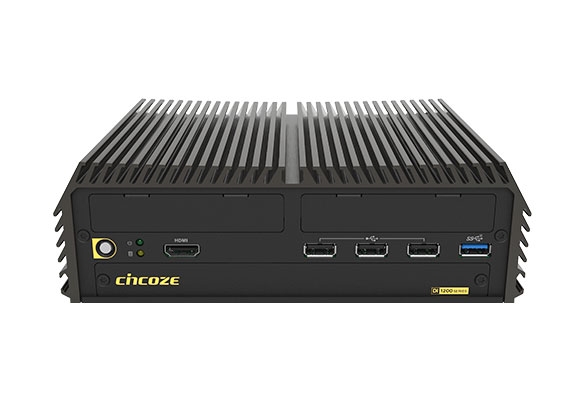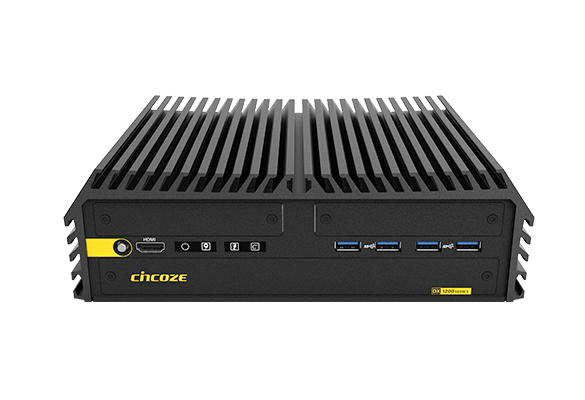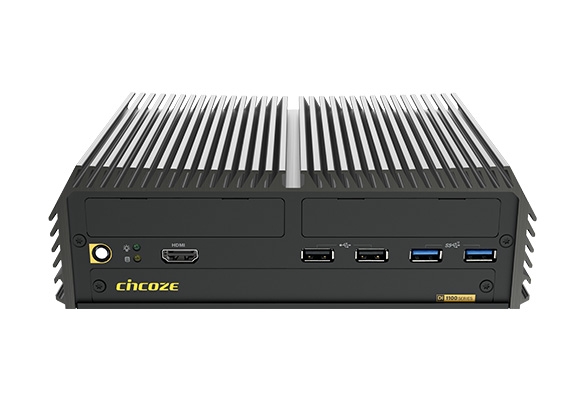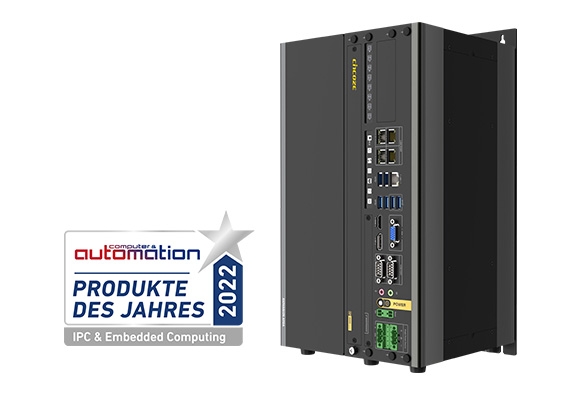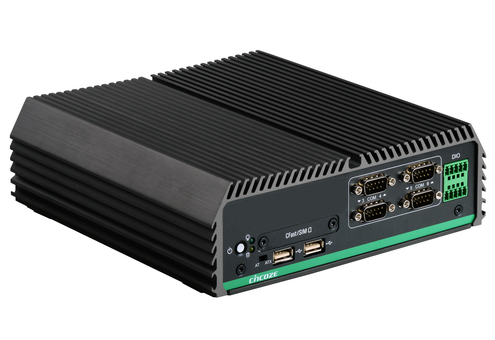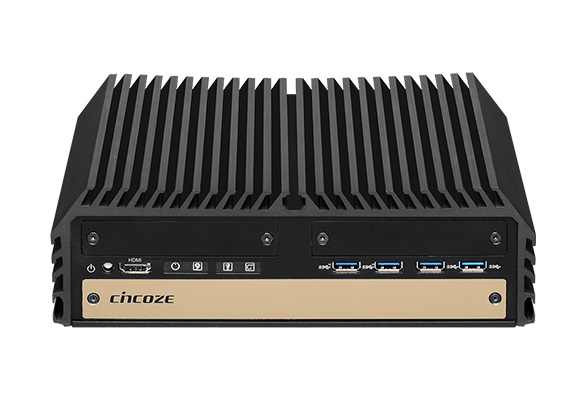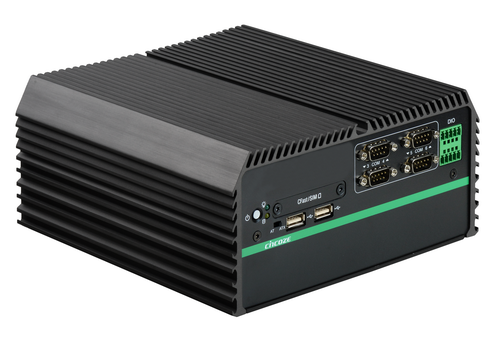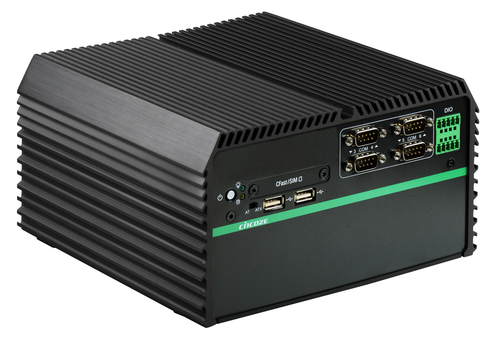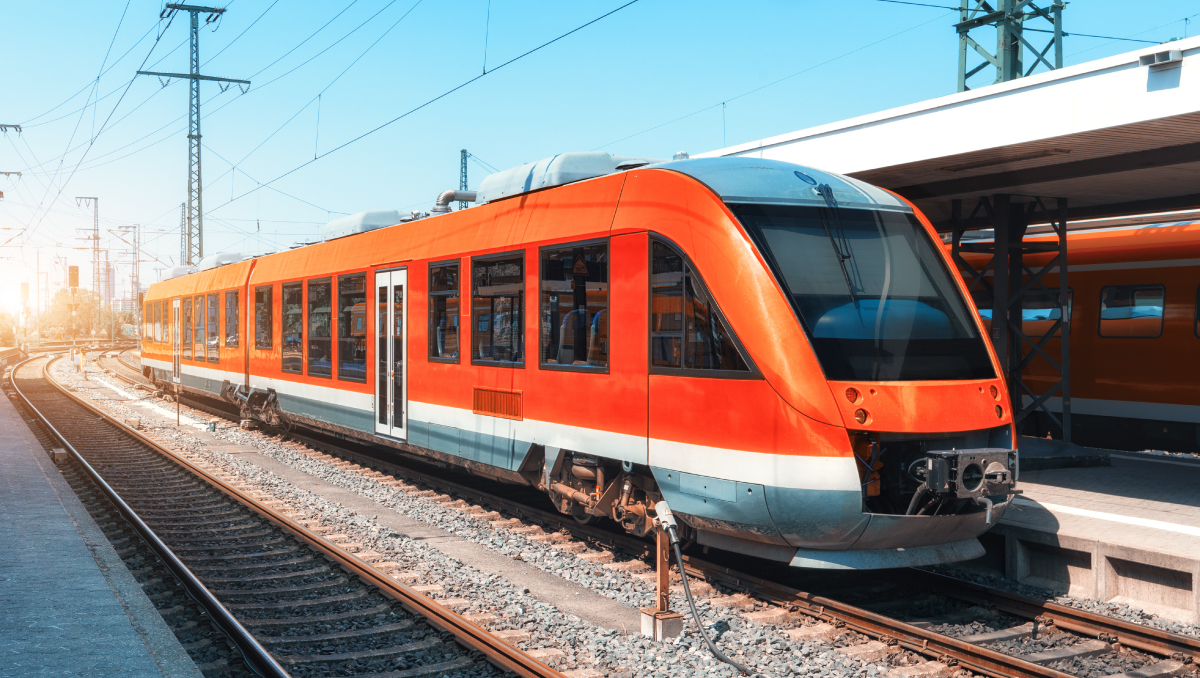
Railway Computers - The Essential Ingredient for Smart Rail
Rapid urbanization and increasing population density in modern cities are making rail an indispensable component of the transportation infrastructure. Many rail operators are accelerating digital transformation to tackle the growing passenger traffic, increasingly complex operating models, and higher safety and reliability requirements. Railway computers are ideal for optimizing operational efficiency and enhancing the passenger experience. They offer powerful computing and data processing capabilities alongside high durability and reliability. These features ensure stable operation in harsh environments with constant vibration, electromagnetic susceptibility (EMS), and extreme temperatures. Some railway computer applications include train control, signaling systems, carriage safety monitoring, and passenger information displays. They promote the development of smart transportation and ensure that railway computing can meet the needs of modern cities.
This article delves into the challenges railway computers face and the requisite industry certifications. A selection of case studies will analyze how railway computers can promote smart developments and ultimately become an indispensable driving force for smart cities.
4 railway computer essentials
Railway computers for smart transportation face harsh installation environments and must support diverse applications. These four critical features outlined below provide a reliable foundation for the stable operation of railway computing systems.
High reliability and stability
Continuous vibration during train operation, electromagnetic interference from other equipment, unstable power, and high temperatures in electrical enclosures pose a severe test for railway computers. To ensure high stability and reliability, these specialized computers must be shock and vibration resistant, typically measured against the US military standard for shock and vibration resistance (MIL-STD-810H). Radio wave interference from high-voltage power systems and signaling equipment can also interfere with the computer’s operation, so reducing EMS is indispensable. Railway computers also generally support wide temperature operation (-40°C to 70°C) and wide range voltage input (9-48V), and have fanless and cableless designs to ensure stable operation in harsh environments.
Powerful data processing capabilities
Rail transit systems must process large amounts of data in real time to ensure train safety, operate efficiently, and improve the passenger experience. These applications range from train control instructions and signaling system status to carriage safety monitoring and passenger information systems, and include data inputs ranging from train position and speed to carriage interior and exterior environmental data. Railway computers must have exceptional processing power to achieve rapid response and instant analysis to meet these requirements.
Rich I/O and flexible expansion
The diverse range of railway computing applications requires rich I/O interfaces and flexible expansion. Railway computers need PCIe, Mini PCIe, M.2, and other slots to quickly add add-on cards, communication modules, storage devices, and I/O modules. They also need diverse I/O interfaces to connect sensors, displays, and other equipment for applications such as signal control, passenger information display, and monitoring.
Low maintenance
Maximizing uptime is critical for railway computers. The two-pronged approach for maximizing the uptime of railway computers that operate non-stop under intense operations is to keep maintenance to a minimum and make any necessary maintenance quicker to perform. On the reliability side, fanless, cableless, and other design elements, combined with industrial-grade protections improve the dependability so maintenance can happen less frequently. On the maintenance side, placing the most commonly used switches and slots, such as the reset switch, clear CMOS switch, AT/ATX mode switch, SIM card slot, and removable hard drive slot on the front maintenance area makes it quicker to perform regular fixes, reducing the amount of time needed for emergency repairs.
Rail computing certifications and standards
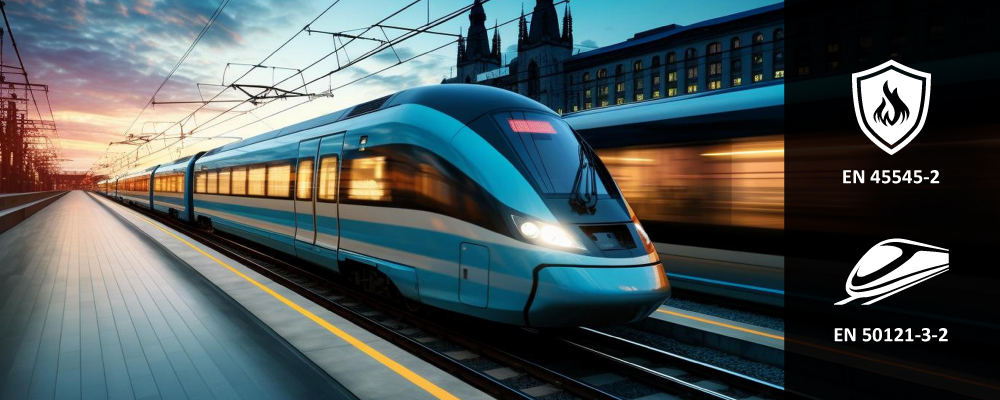
As a primary transportation carrier, the safety of rail transit is the top priority. Computers in rail systems must pass or comply with multiple certifications and standards that enhance the safety and reliability of the overall system.
EN50155
EN 50155 is the international standard for railway computing electronic equipment, covering temperature, humidity, shock, electromagnetic compatibility, and power supply requirements.
- Temperature: The EN 50155 standard divides the operating temperature ranges into multiple levels. TX is the most stringent, requiring continuously stable operation for temperatures from -40°C to 70°C and 10-minute bursts of up to 85°C.
- Humidity: Electronic equipment must operate stably at between 75% and 95% relative humidity and include anti-condensation measures to avoid damage caused by internal condensation due to rapid temperature changes.
- Vibration and shock: Continuous vibration and occasional shocks are common challenges during train operation and according to the EN 50155, electronic equipment must pass IEC 61373.
- EMC: EN 50155 uses the same standard as EN 50121-3-2, requiring electronic equipment to have excellent electromagnetic compatibility so that electronic equipment in environments with strong electromagnetic interference such as high-voltage power and signal systems doesn’t interfere with or get interfered by other equipment.
EN 45545-2
EN 45545-2 is the European fire safety standard for rail and aims to ensure maximum protection of personnel in the event of a fire. The standard focuses on the fire performance of interior materials and components, dividing them into multiple grades (R1 to R28) according to flame retardancy, smoke density, and toxicity. Railway computers typically meet R24, R25, or R26. According to the test results the fire resistance is divided into three hazard levels (HL1 to HL3) with the highest fire resistance level HL3 being suitable for tunnels or higher-risk operating environments.
Railway computing applications
Smart surveillance
Railway passenger safety has entered the spotlight in recent years, with terrorist activities prompting the rollout of real-time monitoring to check passenger movements proactively. These smart surveillance systems help ensure passenger safety by identifying possible passenger conflicts and congestion in the carriage and issuing real-time warnings of suspicious situations so operators can take action and handle emergencies promptly.
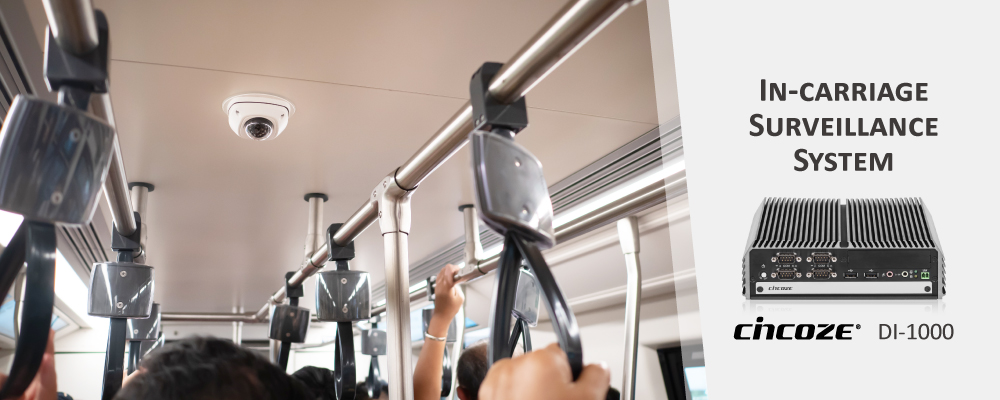
Use case: An Asian railway system integrator used the Cincoze DI-1000 in its NVR system to perform real-time surveillance in the carriage, allowing the driver and traffic control center to respond quickly and take action to ensure the safety of passengers.
Automated track inspection vehicle
Track inspection is a vital part of the rail transit system, and automated track inspection vehicles provide an efficient and accurate alternative to error-prone and time-consuming traditional manual inspection. Inspection vehicles can monitor track status in real-time, such as wear, deformation, cracks, and other issues, while reducing the time and cost required for manual inspection to ensure the stability and safety of track operations.
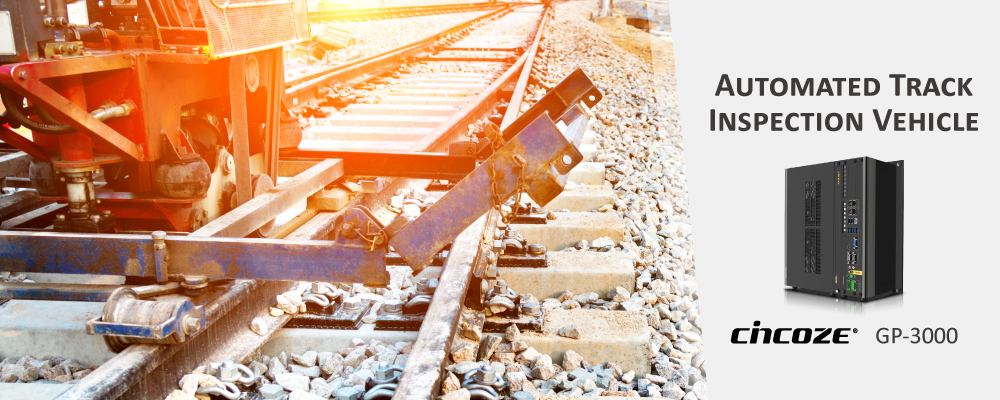
Use case: A track maintenance and inspection equipment manufacturer used Cincoze railway computers on their automated track inspection vehicles. Images are captured by laser sensors and cameras installed under the train and analyzed by the imaging system to assess overall track safety.
Train signal control system
Railroad signaling is at the heart of rail operations. In modern systems, it is responsible for processing sensor data about train position, speed, direction, and more, then sending instructions to control signals, switches, and other key facilities in real time. These systems can also adjust the train’s route according to real-time traffic conditions, optimizing track operation efficiency and ensuring safe and smooth transportation.
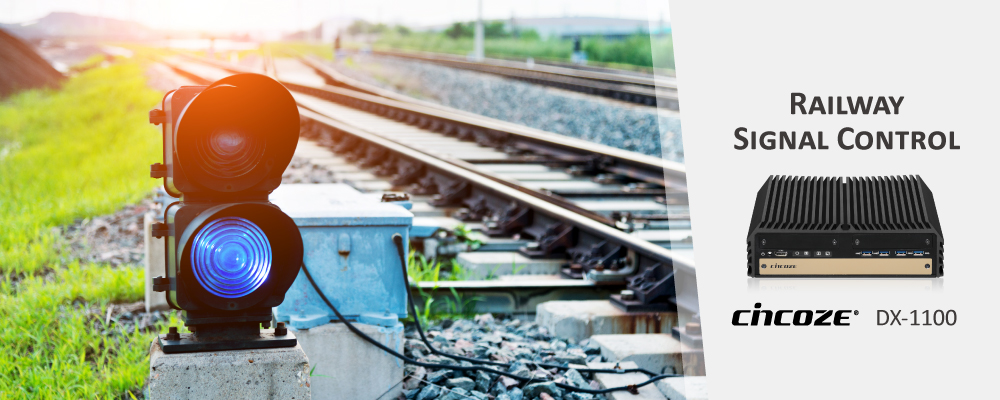
Use case: A train operator in Asia integrated the Cincoze DX-1100 into its train signal control system to optimize railway train management. The Cincoze DX-1100 handles data collection from sensors in carriages and signaling systems and transmits GPS data to the train control center in real-time to ensure precise management and efficient dispatch of train operations.
Passenger information system
The passenger information system (PIS) improves the passenger experience by providing up-to-date information on the next stops, arrival times, transfer suggestions, and emergency announcements. The system can also support entertainment, such as videos, music, or news, to provide a richer ride experience and make the journey more enjoyable and convenient.
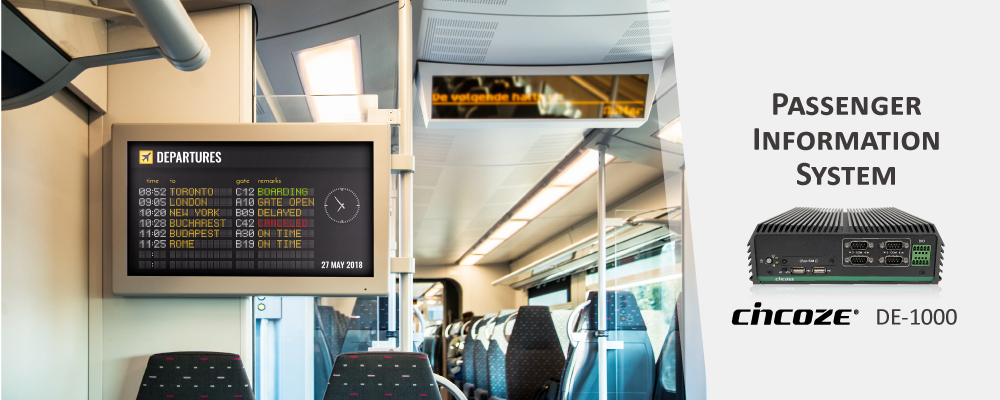
Use case: A Nordic state-owned railway company wanted to provide real-time information through the PIS, including route maps, destination attractions, departure and arrival times, advertisements, and more to enrich the passenger experience and increase passenger satisfaction. They chose the flexible and rugged Cincoze DE-1000 railway computer to provide stable operation for the PIS system.
